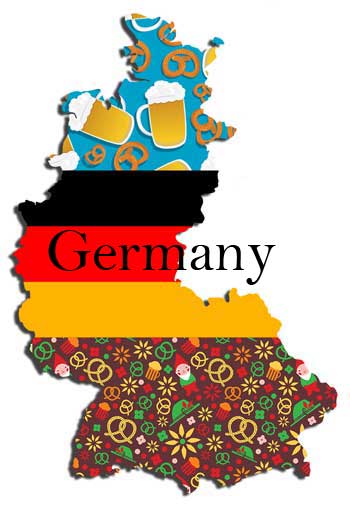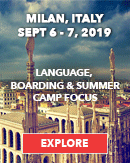Linear-Active Cultures Explained: Germany and U.S.
Students from linear-active countries traditionally come from Western Europe and North America. These regions are also among the biggest players in international student recruitment – both in sending and hosting. So, today we’ll find out what linear-active cultures look like with two popular examples – Germany and USA.
While both countries are typical representatives of the Western civilization, their national characters are quite different. In this context, national character defines collective self-perception, rules of conduct and sensibility shared by people of the same nationality. Of course, the term has its shortcomings, but in our effort to capture the essence of various cultures, we will explain local features in this way.
In order to understand why linear-active cultures are just what they are, we will look into both countries’ history. Then, we will compare cultural traditions, immigration, business and economy.
Germany
2009 paper Cultural Integration in Germany states that Germany has the biggest immigrant population in the whole European Union. 12.18% of all Germans have some immigrant background personally or through their parents. Nowadays, with around 1.5 million asylum seekers, these numbers are reaching new records.
Historically, Germany opened up for immigrants after World War II, when there was a large influx of workers from Italy, Greece, Spain, Turkey, Portugal and former Yugoslavia. After the fall of the Iron Curtain, immigration waves from Poland, Romania and other former Soviet countries quickly followed suit. When new member countries joined the European Union and, subsequently, the Schengen Area, even more immigrants came over. The 2005 Immigration Act that acknowledged Germany as an immigration country and discussed possible ways of integration for the growing immigrant population further encouraged this process.
With such a long tradition of multiculturalism, diversity and immigration, Germany is now a textbook example of how to do integration right. German immigrants enjoy a really wide variety of programs for social inclusion, education and culture along with very cheap language and orientation courses.
Even with so many external cultural influences, Germany today still keeps its core national traits and characteristics:

- Being private: Germans draw a line between their private and professional lives. That is the reason why relationships can take a lot of time to fully grow and develop. Privacy is a value and only people who can prove to be trustworthy can get to know a German person well.
- Having great organizational skills: Germans are famous for being extremely well organized. Thanks to this trait, the country was able to fully recover and come to post-Cold War times as one of the biggest and healthiest economies in Europe.
- Being disciplined and seeking ways to optimize: Very similar to the previous trait, this characteristic stresses the way Germans are always ready to find a new solution to make use of time and resources more efficient. They achieve this with a strong sense of discipline and keeping up with plans.
- Caring about customs: The beautiful German Christmas markets are famous all over the world, maybe even more than the Octoberfest takeover every autumn. German families honour their traditions, and this practice strengthens the sense of national spirit and community.
- Observing schedules: Germans highly value punctuality, both regarding work and personal life. That’s why being late for a meeting is a sign of disrespect – and it doesn’t really matter if that’s a date or a conference call.
USA
The third largest country in the world is a melting pot of cultures, religions and nationalities. It was formed in three main immigration waves: A first wave of people forming the original colonies in the middle of 18th century, a second wave expanding to the Wild West in the middle of 19th century, and a third wave that fuelled the rise of megapolises in the beginning of 20th century.
Nowadays we are seeing a fourth wave: the numbers of immigrants are constantly growing. Education immigration alone brings thousands of international students from China, India, South Korea and Saudi Arabia to the US every year.

Here are some typical traits you can observe in American people and culture:
- Defending democracy and freedom: Being one of the oldest democracies, the U.S. is extremely proud and loud about democracy being one of its biggest values. Sometimes this attitude is taken with a smile, as Americans themselves agree that wearing American flag-styled bikinis or adding pictures of bald eagles everywhere is probably not the best manifestation of the values those symbols represent.
- Being open communicators: Americans are usually extremely friendly, good at having small talk, easily starting conversations with strangers and openly sharing their opinions on various subjects. Physical contact in informal settings is quite free as well, but in a workplace it is strictly limited to the basic handshake.
- Having great entrepreneurial spirit: Business empires, starting from Henry Ford and going to Elon Musk define the true American spirit. Most Americans grow up with a strong belief that the U.S. is the land of opportunity where everyone who works hard and thinks big can create a bright future for themselves and their families.
You can find a more in-depth analysis of the American national character in “History, National Character and American Cizilization” by Stephen Mennell.
Now that you know the main characteristics of linear-active cultures, you must be wondering what is the right approach to use when recruiting such students.
Find out how to address the needs of international students from linear-active cultures in our next post!










































